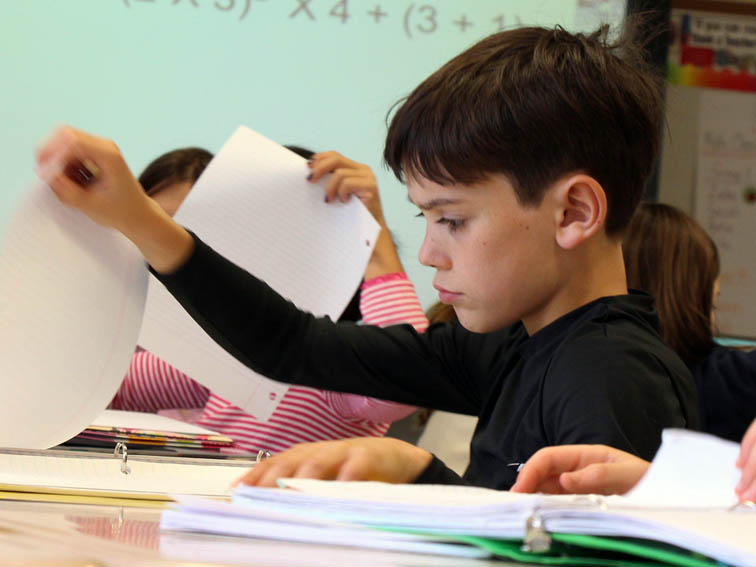 10 Conditions For Self-Sustaining Learning In The Classroom
10 Conditions For Self-Sustaining Learning In The Classroom
by Grant Wiggins, Authentic Education
The 4th of July: a great time to think about independence. No, not yours or mine; the students’ independence. What curricular plan do you have for giving students increasing intellectual autonomy next year?
In all the hullabaloo about standards* and tests, a more basic aim has long been sacrificed in K-12 education: ensuring that students graduate able to handle the freedoms of college and the pro-active obligations of the workplace. As many have long heard me say, my children had more intellectual and executive freedom in Montessori School as 4 year olds than they did as high school students.
I recall my son, Ian, as a 4-year-old, pondering which ‘work’ to do that day, on the way to school: food work? sewing work? Or Drawing? Well, why might you choose one or the other today? I asked. And he proceeded to do a cute think-aloud with little furrowed brow, about the pros and cons (based on recent choices and skill deficits).
Fast forward: grown-up Ian has lost 2 room-mates as he begins senior year in college this coming fall. Why did they leave? They were unable to handle the complete freedom to set their schedule and honor their obligations.
What is wanted in education is a curriculum and assessment system that builds in, by design, a gradual release of teacher responsibility across the long-term scope and sequence. Traditional curriculum design runs completely counter to this idea, of course: the work gets harder and harder but the student has practically no executive control over the intellectual agenda up until graduation.
Making matters worse, a number of people have wrongly interpreted the Gradual Release model to say that the last step is called “Independent Practice.” This is utterly misguided. Independent practice is still scaffolded, prompted, and simplified activity in which the student knows full well what single move we want them to use. There is no strategic thinking or executive control needed. The acid test of autonomy therefore, arrives when students confront provide a challenge and no advice about strategy or technique is provided or hinted at. (Editor’s Note: Great point, Grant!)
Real Problems & Questions: Self-Sustaining Worthy Work
The big exception is in schools where projects, problems, challenges and independent study provide the framework for the curriculum.
I had the good fortune in the last few weeks of school this year to sit in on 4 different classes where such an approach was being used: a 5th-grade classroom where independent reading and choice of text is the norm; a vocational high school where the team of teachers have built a challenge-based curriculum, a local high school where a team of two teachers has made their Honors Biology a problem-based course, and (in the same district) 8th graders who must completely organize a week of time, all day, to prepare for a simulation in which they propose ways of meeting the UN Development Goals in front of panels of adult outside judges. (This year they piloted a 3rd-grade version of a creation-presentation challenge.)
What watching these diverse experiences got me thinking was: what do these experience have in common? How have the teachers engineered freedom by design? More generally, what are the optimal conditions for achieving student intellectual autonomy and high levels of learning?
The essence of the independence design challenge is to ensure students have maximally self-sustaining worthy work, thereby freeing up the teacher to coach. That’s what makes problem-based learning work: the problems are clear, focused, rich, interesting, on point – and, thus self-sustaining. That’s what makes independent leveled reading work in the 5th-grade classroom. That’s what also makes use of ‘clickers’ in Eric Mazur’s Physics class or Socratic Seminar in my former classroom work: the students are fully engaged in a genuinely intellectual challenge that can engage them in real thought and learning for a good while – and thereby free the teacher to observe, listen, provide personalized feedback and advice.
 Worthy Work: Back To John Dewey
Worthy Work: Back To John Dewey
The work cannot be merely self-sustaining – busywork as opposed to worthy work. No one wrote more often and more thoroughly on this distinction than John Dewey over 100 years ago:
The giving of problems, the putting of questions, the assigning of tasks, the magnifying of difficulties, is a large part of school work. But it is indispensable to discriminate between genuine and simulated or mock problems. The following questions may aid in making such discrimination:
(a) Is there anything but a problem? Does the question naturally suggest itself within some situation or personal experience? Or is it an aloof thing, a problem only for the purposes of conveying instruction in some school topic? Is it the sort of trying that would arouse observation and engage experimentation outside of school?
(b) Is it the pupil’s own problem, or is it … made a problem for the pupil only because he cannot get the required mark or be promoted or win the teacher’s approval, unless he deals with it?…
As a consequence of the absence of the materials and occupations which generate real problems, the pupil’s problems are not his… A pupil has a problem, but it is the problem of meeting the requirements set by the teacher. His problem becomes that of finding out what the teacher wants.
 10 Conditions For Self-Sustaining & Self-Directed Learning In The Classroom
10 Conditions For Self-Sustaining & Self-Directed Learning In The Classroom
It seems to me, then, that the following conditions have to be met to ensure that the work we give students is self-sustaining and worthy work:
- Rich, challenging, and meaningful problems/issues/tasks that require core content
- No single, obvious, or superficial solution path – yet, the task is doable.
- Clear performance goals and criteria for judging progress and knowing when the work is “done to standard”
- Access to appropriate and varied resources
- Familiar routines/protocols that help students organize the process (with varying degrees of transfer expected, via scaffolding/explicitness provided by the teacher; depending upon level of student skill and autonomy)
- Sufficient choice/personalization to enable students play to strengths/interests
- Self-assessment and self-adjustment guides via models and rubrics
- Benchmarks, checkpoints and other formal and informal formative assessments, to ensure students are on course and on time.
- Explicit norms of mutual respect and personal responsibility, preferably built with student input and sign-off.
- Teacher respect for reasonable non-disruptive student “down time.”
Note: The work is sufficiently self-sustaining if the teacher can formatively assess and provide personalized feedback and advice to each student.
This post first appeared on Grant’s personal blog; image attribution flickr user woodleywonderworks and ryanlf; 10 Conditions For Self-Sustaining Learning In The Classroom
